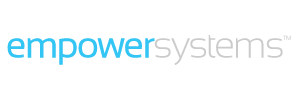
01 Apr How to Effectively Manage Changes in Documentation Workflow in EHRs
By: Empower Systems
Managing changes in Electronic Health Record (EHR) software documentation is critical for ensuring accuracy, compliance, and efficiency in healthcare operations. As EHR systems evolve with updates, new regulations, and workflow optimizations, having a structured documentation workflow is essential to prevent miscommunication and maintain patient safety. Below, we explore best practices for effectively managing changes in EHR documentation workflows.
1. Establish a Centralized Documentation Repository
A centralized repository ensures that all documentation, including process changes, software updates, and policies, is stored in a single location. This repository should be:
– Accessible to authorized users
– Version-controlled to track changes over time
– Regularly updated to reflect the latest system modifications
2. Implement a Change Management Process
A structured change management process should guide how modifications to the EHR system are documented and communicated. This process should include:
– Request and Approval: Define a clear process for submitting and approving documentation updates.
– Impact Assessment: Evaluate how changes affect workflows, compliance, and user training.
– Implementation Timeline: Set deadlines and milestones for documentation updates.
3. Standardize Documentation Formats
Inconsistent documentation can lead to confusion and inefficiencies. Establishing standardized templates and formats ensures uniformity. Key elements to standardize include:
– Step-by-step instructions for new workflows
– Screenshots or diagrams for clarity
– Change logs to track modifications
4. Assign Documentation Ownership
Designate a team or individual responsible for overseeing documentation updates. This role should:
– Ensure accuracy and completeness of documentation
– Collaborate with IT, compliance officers, and healthcare professionals
– Regularly review and audit documentation for relevance
5. Automate Documentation Updates Where Possible
Using automated tools within the EHR system can streamline documentation updates. Consider:
– Workflow automation tools to update process documents dynamically
– AI-driven documentation assistants to suggest edits based on system changes
– Alerts and notifications to inform users about updates in real time
6. Train and Engage Staff on Documentation Changes
Keeping staff informed about changes is crucial for adoption and compliance. Effective training strategies include:
– Regular training sessions and webinars
– Interactive guides and knowledge bases
– Feedback loops for staff to report inconsistencies or improvement suggestions
7. Monitor and Audit Documentation Changes
Continuous monitoring ensures that documentation remains up-to-date and effective. Conduct:
– Periodic audits to review documentation accuracy
– User feedback surveys to assess usability
– Performance tracking to evaluate the impact of documentation changes on workflow efficiency
Closing Thoughts
Managing changes in EHR documentation workflows is a dynamic and ongoing process. By establishing structured procedures, leveraging automation, and prioritizing staff engagement, healthcare organizations can ensure seamless transitions, compliance adherence, and improved patient care. An efficient documentation workflow not only supports system integrity but also enhances user confidence in adopting EHR updates effectively.

